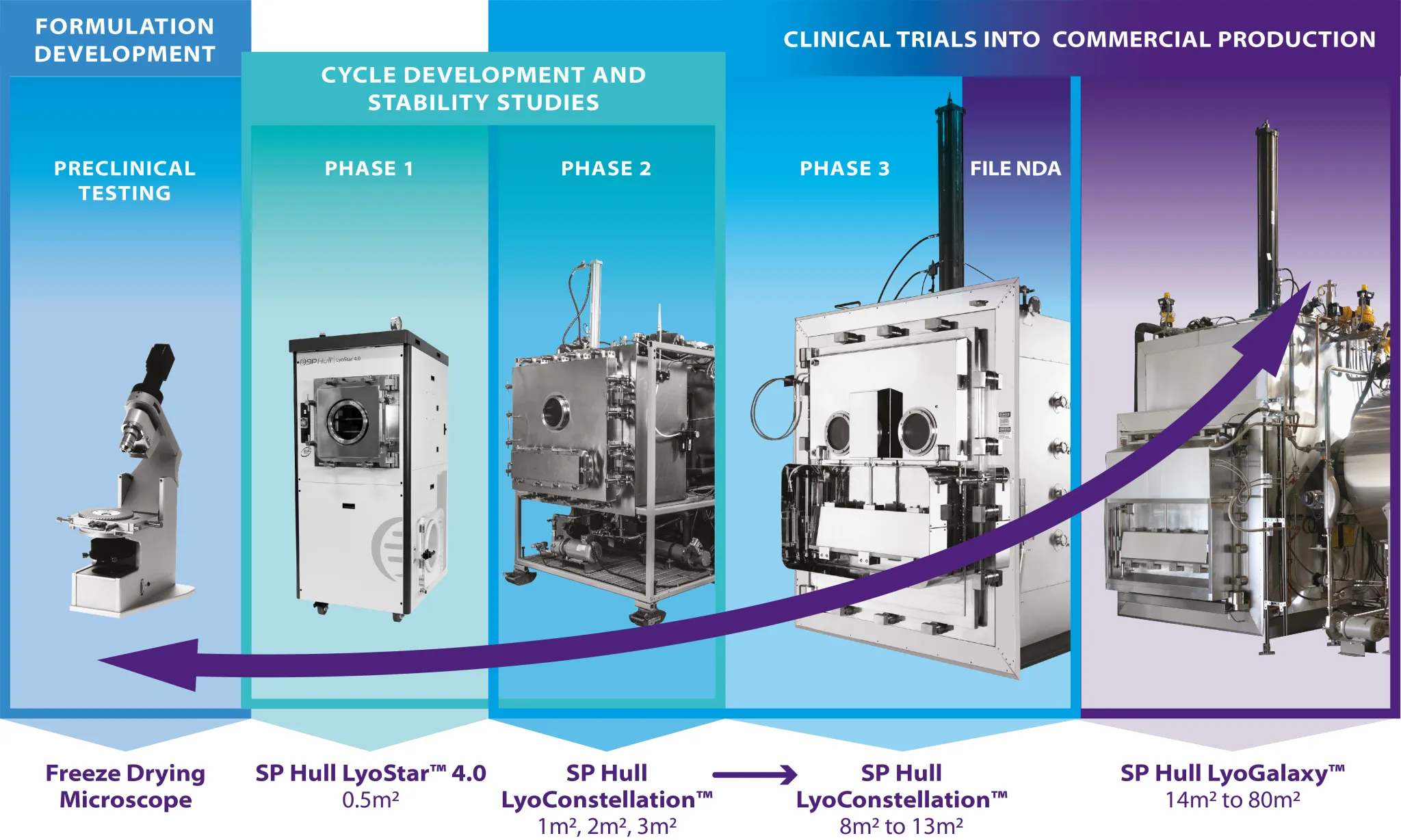Surfactants are widely used in frozen and freeze-dried protein formulations to prevent ice-surface-induced destabilization. Polysorbates (PS), especially PS20 and 80, are commonly used in protein products. However, the concerns with their chemical stability have become evident — they undergo oxidative and hydrolytic degradation during processing and storage. Poloxamer 188 (P188) is regarded as an alternative candidate due to its improved chemical stability and low toxicity. Although the surfactant is suitable for parenteral administration, it has not been widely used in protein formulations.
Our study aims to characterize the phase behavior of P188 during freeze drying, and to understand the impact of surfactant phase behavior on its stabilization function. In frozen solution, P188 had a high crystallization propensity which could be mitigated by noncrystallizing solutes, such as sugar and protein. It also exhibited a similar stabilization effect to PS in preventing ice-surface-induced protein destabilization. However, its crystallization undermined the stabilization function, especially when used at a low concentration. Interestingly, sucrose exhibits a stronger inhibitory effect on P188 crystallization than trehalose. During drying, the crystallinity of P188 significantly increases, rendering its additional role as a bulking agent. In general, P188 lyophiles reveal an elegant product appearance. However, P188 alone could not stabilize the protein during drying and a lyoprotectant (e.g., sucrose or trehalose) is needed to ensure protein stabilization during freeze drying. In summary, P188 is a promising dual-functional excipient — a stabilizer in the frozen system, and a bulking agent in the freeze dried product.
Jinghan Li is a PhD candidate from Dr. Raj Suryanarayanan’s research group at the University of Minnesota. His interests span numerous areas in pharmaceutics.
Speaker
Jinghan Li, PhD Candidate
University of Minnesota











